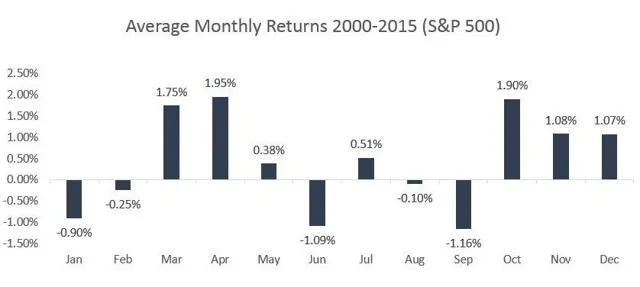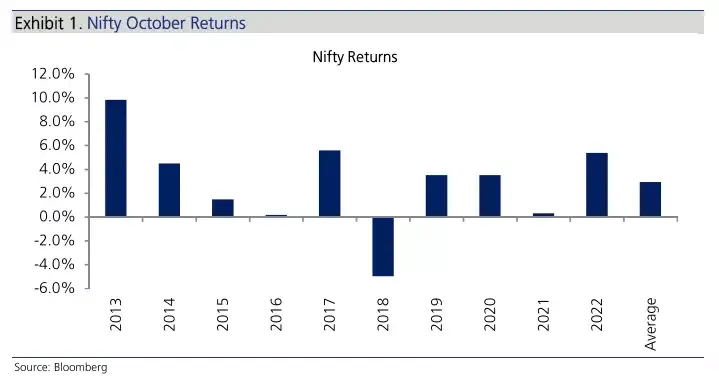Buying Stocks in October, November & December? Seasonal Patterns in Global & Indian Stock Markets

Understanding the seasonal pattern in the stock market is crucial for traders aiming to optimize their returns. Seasonality in the stock market refers to the recurring trends and patterns that are observed during specific periods within the year. These patterns are identified based on historical data, and while they don’t guarantee future performance, they do provide insights into potential market movements.
When do stock markets perform better?
Stock market tends to perform better between November and April compared to the period from May to October – this is known as the “Sell in May, Buy in October” effect. Research conducted across 14 countries over 2000 to 2015 reinforces this observation.

What are the best months and worst months for stock markets?
Knowing that some months tend to be weak or strong on average can help traders and investors make more informed decisions. For instance, a long only trader might be more cautious during historically weak months. Another instance could be that in historically weaker months there could be potential buying opportunities for the buy-and-hold investor allowing them to profit via a buy low and sell high strategy. So, here are the average monthly returns for the period 2000 to 2015 for S&P 500.

As we can see there are 3 very poor months – January, June and September. February and August also don’t do well. However, there appears to be significantly better performance and better monthly returns for stock markets in March, April, October, November and December.
Monthly Returns for Nifty from 2013 to 2022
Over the last 10 years, the Nifty index has predominantly shown a positive trend in October, showing gains 9 times out of 10. On average, October has delivered a return of ~3%.

Nifty Midcap index has also displayed a 100% positive track record in the past decade, with an average return of 3.3%. Nifty Bank and Nifty Financial indices have also consistently ended positively in October, boasting impressive average returns of 6.2% and 5.4%, respectively. Indices like Nifty Metal, Auto, and Energy have shown positive returns in October when we look at 8 out of the last 10 years.
Bottom Line: What Does October, November & December mean for us as investors in Indian stock markets?
Well, let’s look at where we are today and what to expect in the next few months for the Indian economy and the Indian stock markets. The Indian Government is introducing schemes like subsidies, income guarantees, and allowance hikes, boosting consumer sentiment, also on the backdrop of an upcoming election year in 2024. The upcoming national elections in 2024 might spur further government spending which could help lift consumer sentiment.
Rural demand has been sluggish for a while now due to factors like stagnant incomes and export curbs to control inflation, specifically when we consider staple goods like rice, sugar, potatoes etc. for food inflation . Urban demand has outperformed rural demand since November 2021. Rural demand is, however, expected to improve, with FMCG demand turning positive in August. Dabur, a significant FMCG player, expects fiscal stimuli for the rural sector to also come in before the elections, which could help boost rural market demand further.
Premium segments are expected to drive sales, whereas the consumption trend in entry-level products shows warning signs. The increasing preference for premium products is visible across sectors – from automobile to consumer electronics. For instance, sales of pricier sports utility vehicles are skyrocketing, while those of entry-level cars have plunged. Inflation and inconsistent monsoons have affected rural incomes. High food prices, especially, impact the lower-income brackets more.
Festive season and political spending are expected to drive rural demand, improving private consumption by the end of 2023. Industrial activity and retail inflation statistics point to a healthy economy. There’s also a rebound in the output of consumer durables.
Liked this story and want to continue receiving interesting content? Watchlist Wright Research smallcases to receive exclusive and curated stories.
Check out Alpha Prime smallcase here
SEBI Registration Details: Corporate Registered Investment Advisor | Company Name: Wryght Research & Capital Pvt Ltd Reg No: INA100015717 | CIN: U67100UP2019PTC123244. For more information and disclosures, visit our disclosures page here.




